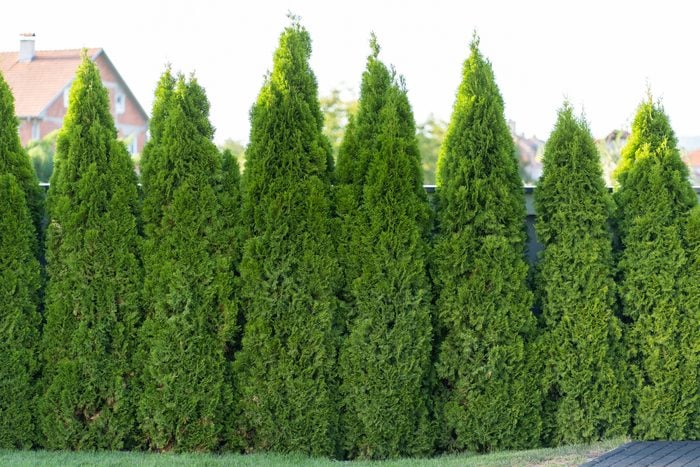
Arborvitae
One of the most popular screening plants, arborvitae is a thickly adorned evergreen that comes in a range of shapes, from dwarf globes of just one to two feet all the way up to 30-foot upright giants. Although shorter arborvitae are commonly used as foundation plants, taller ones serve as screens and hedges, providing plenty of privacy.
Arborvitae are tough, hardy plants that can withstand drought once established. Unfortunately, they’re susceptible to winter burn, i.e. desiccation due to drying winter winds. And deer and rabbits will eat up the lower portions during difficult winters. Wrapping in burlap or applying an anti-desiccant spray will help the former, while temporary fencing should alleviate the latter.
Best in U.S. Department of Agriculture Plant Hardiness Zones 3 through 7.
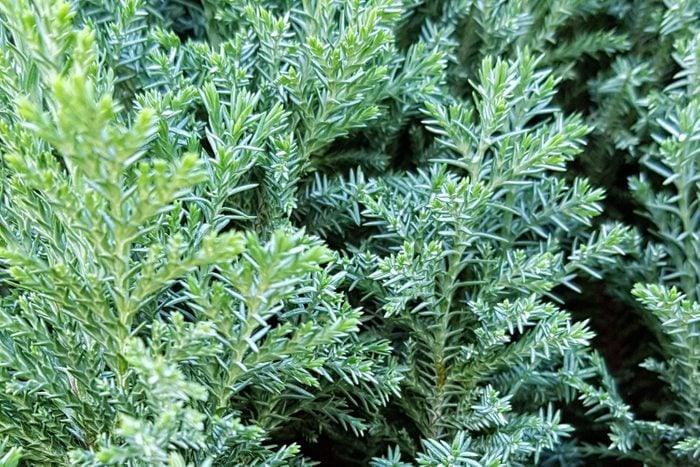
Juniper
If you’ve got varmints munching on your arborvitae, the solution may be as close as the nearest juniper, whose prickly green needles provide a measure of protection. This no-nonsense evergreen comes in many forms, including sprawling ground cover and mounded meatball. You can also find cultivars with handsome blue-green foliage.
Upright juniper, some growing 15 feet tall or more, are best suited for privacy needs. This fast grower accepts dry, rocky soils — conditions that would doom many other shrubs and small trees.
Common juniper is hardy in USDA Zones 2 through 6. Other species offer a more southerly inclination, like Chinese juniper (Zones 3 through 9) and its popular cultivar ‘Hetzii,’ which is five to 10 feet tall.
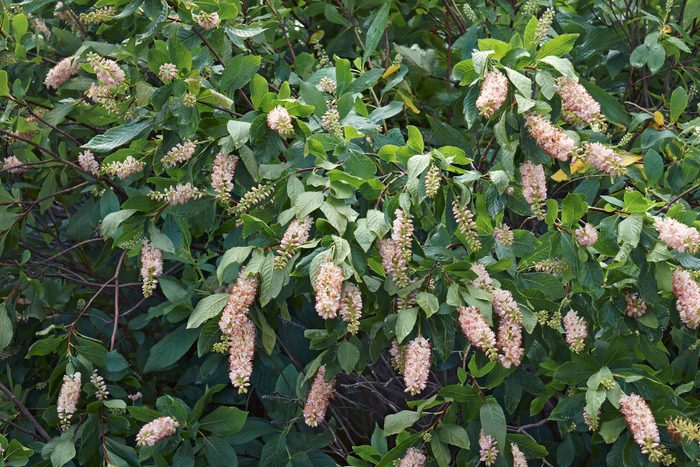
Clethra
Also known as Summersweet, this privacy plant can also stand on its own as a focal point. White to pinkish white spires of fragrant flowers in midsummer and beautiful golden foliage in fall make it stand out.
It’s a thickly growing shrub that sends up sucker shoots from the roots. And at six to eight feet tall, clethra can provide a good amount of privacy to accompany its beauty.
Clethra likes moist, well-drained acidic soils and will take anything from full sun to light shade. It’s hardy in Zones 4 through 9.
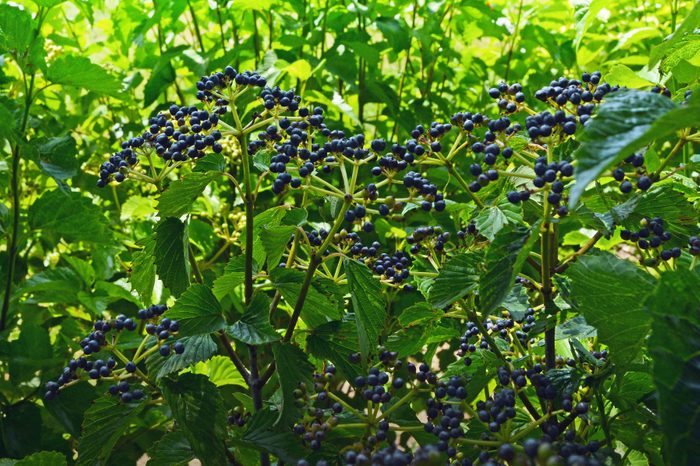
Viburnum
This genus of shrubs is beloved for its large white flowers in spring, followed later in the year by fruit clusters and colorful fall foliage. Plants are often large, substantial and thickly clothed in leaves, providing ample privacy.
One of the best is Burkwood viburnum, a rounded hybrid that grows eight to 10 feet tall and slightly narrower. A mass of fine stems makes it impenetrable, physically or visually. It’s hardy in Zones 4 through 8. Arrowwood viburnum, which grows further north in Zones 2-8, reaches up to 15 feet tall and wide for even greater coverage.
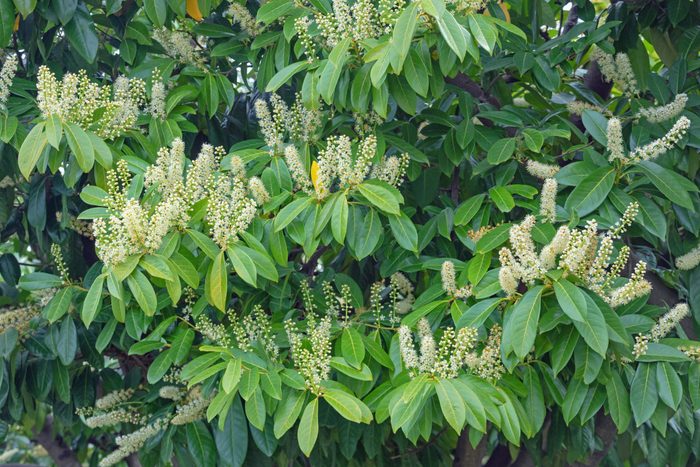
Cherry Laurel
Often used as a screen or hedge because of its quick growth and dense bushy habit, this broadleaf evergreen features glossy, green foliage and fragrant white flowers in spring, followed by purple berries.
Also called English laurel, it grows two to three feet a year and can reach up to 20 feet tall and wide. Along with its rapid growth, other qualities include adaptability and durability. It can grow in sun or shade, takes heat and drought in stride, and is deer resistant. Cherry laurel is hardy in Zones 6 through 9.
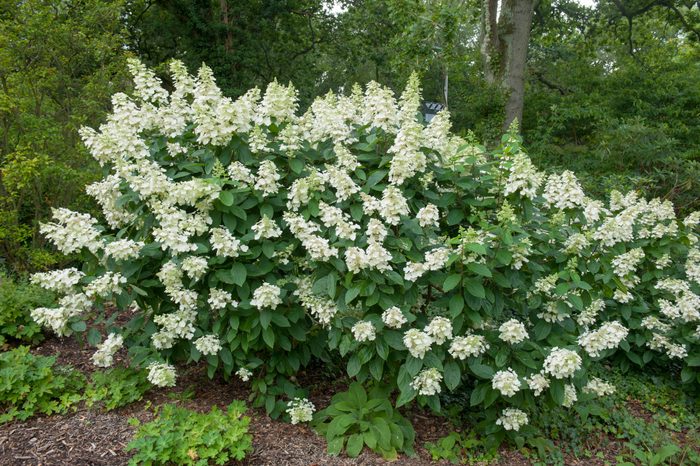
Hydrangea
Hydrangea is hard to miss in summer when it’s full of large white flower clusters. And it’s equally visible in fall, when those same flowers fade to intriguing hues of pink, buff and tan.
Popular species include panicle hydrangea and oakleaf hydrangea, the largest of the bunch and best for privacy. Oakleaf hydrangea grows four to six feet tall, sometimes taller, with attractive burgundy fall foliage. It’s hardy in Zones 5 through 9. Panicle hydrangea is taller, reaching 10 to 15 feet high, and hardy in Zones 3 through 8.
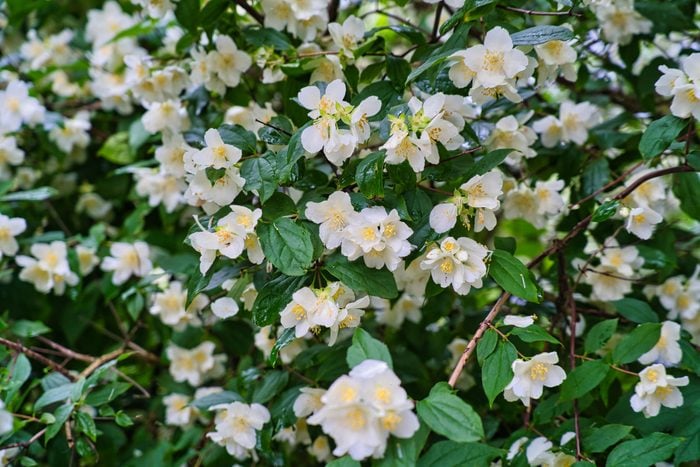
Mock Orange
The highly fragrant flowers, which appear in late spring, are reminiscent of orange blossoms and give Philadelphus its common name. The shrub grows up to two feet a year and matures at about 10 to 12 feet tall and wide, although some cultivars are half that size.
Mock orange makes a good screen when planted with other tall shrubs in a natural border. While it prefers full sun, it will take part shade as well. Likewise, it responds well to a rich, well-drained soil with ample moisture, but also takes sandy soils or those that are acidic or alkaline. It’s hardy in Zones 4 through 8.
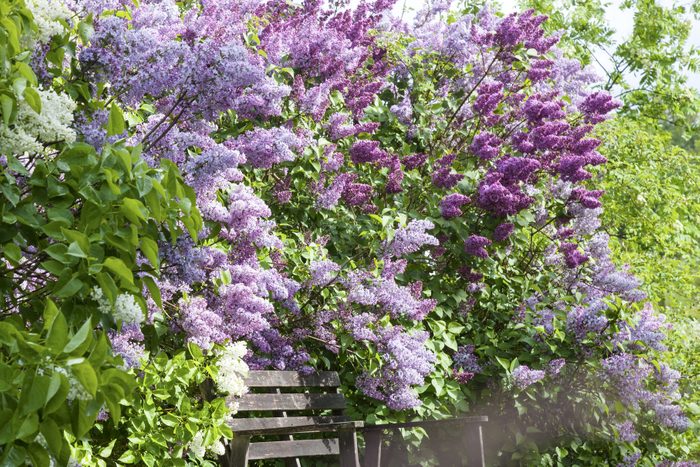
Lilac
On old farm windbreaks, lilac is a gnarly tree full of character. In home landscapes where it’s more likely to be pruned, lilac makes a lovely tall shrub.
Its large spade-shape leaves provide privacy during the growing season, and the wonderfully fragrant flower clusters dazzle the senses in late spring. Flower colors include white, off-white, pink, red and various hues of purple, including — wait for it — lilac!
Keep lilac healthy and full-looking by removing thicker stems every three to five years. This encourages new shoots to arise from the base, and it looks more natural than shearing. Common lilacs grow 10 to 15 feet tall and are hardy in Zones 3 through 8.
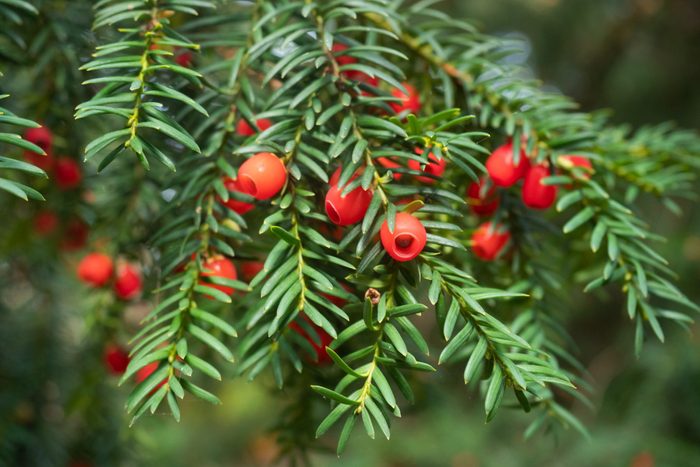
Yew
A thick, nearly impenetrable yew hedge is a formidable sight when made up of tall specimens. Unfortunately, the taller the plant, the more time-consuming trimming can be, which is why most homeowners stick with shorter varieties.
Yews feature flat evergreen needles, and female plants are full of red berries in fall if a male pollinator is close by. The berries are prized by birds, but the seeds within are poisonous to people and pets. Consider using only male plants if you have pets or young children.
There are hundreds of species and cultivars. Some of the most popular are Hicks yew, growing 25 feet tall, and ‘Densiformis,’ which is only about four feet tall. Both are hardy in Zones 5 through 7. Farther south, Irish yew reaches 30 feet tall in Zones 7 and 8. Yews prefer full to part sun but can grow in full shade.
RELATED: Speed up the process of beautifying your yard with these fast growing shrubs.